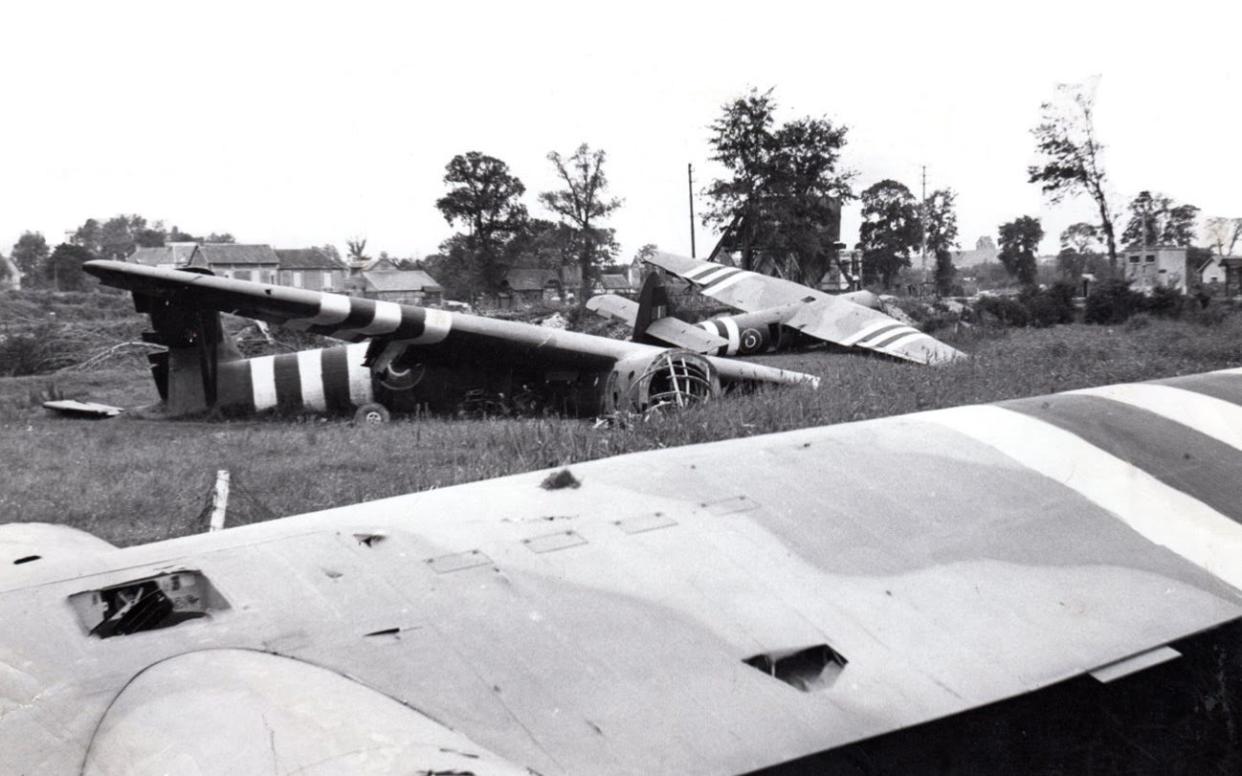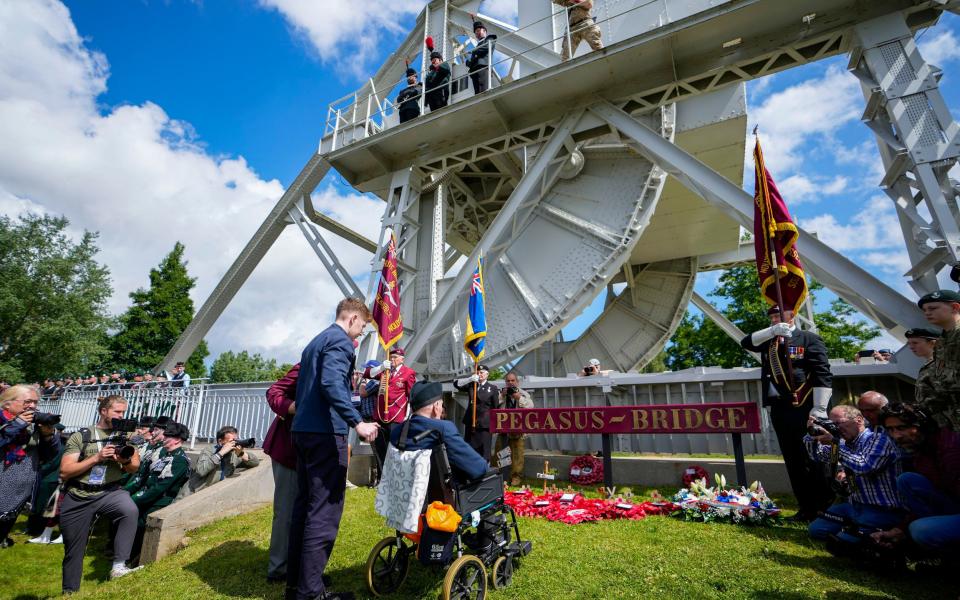D-Day soldiers who landed in gliders remembered for their daring escapades

Shortly after midnight on June 6, 1944, six Horsa gliders landed in occupied France to capture two strategically crucial bridges – one now famously renamed Pegasus Bridge after the emblem of the British 6th Airborne Division behind the daring raid.
They were highly trained members of the Glider Pilot Regiment which, in 1957, was subsumed into the Army Air Corps (AAC).
Staff Sergeant Geoff Barkway was in one of three gliders that landed barely 100 yards from the bascule bridge over the Orne canal at Bénouville as part of Operation Deadstick, whose success was seen as critical to the entire D-Day plan.
He and copilot Peter Boyle reached the target using only “a clipboard, and a stopwatch and a little torch on his finger”.
“They were heavily overloaded… so it came in about 90mph, which is a bit fast,” said his daughter, Jane Barkway-Harney, who was present to mark with a glass of champagne the moment her dad’s Horsa hit the ground.
A stumpy concrete plinth marks the spot.
“I swear we’ve stained the stone with the amount of champagne we’ve poured onto it over the years,” she told the Telegraph, bedecked in a poppy motif dress and matching red jacket and shoes. Her father’s ashes are scattered around the plinth.

“Dad actually came over the top of the second glider and landed in the middle of the strip the size of half a football pitch. You can see how close they were,” she pointed.
The men were led by Major John Howard, whose craft touched down just 47m from the bridge.
“As dad’s glider broke up, he was catapulted through the cockpit along with his co-pilot,” said his daughter.
Concussed, he came out and later recounted saying to himself: “I can’t see much future in being underwater”, so disentangled his harness and helped his co-pilot out.
That was supposed to be just the start of his mission.
“They weren’t just soldiers who flew. They were ground soldiers, so they had to learn to fight. They had to know how to use every weapon, drive every vehicle and fight alongside whoever was in the back of their glider,” said Ms Barkway-Harney.
However, before he could see any more action, her father remembered “feeling a bit of a pain in his hand”.
‘By a thread’
In fact, “he had been shot in the wrist and his hand was pretty much hanging off by a thread.”
That was the end of his action but he survived and was later awarded the highly prized Distinguished Flying Medal.
However, due to a spelling mistake, the wrong man – a private banker – received the medal.
It took 10 months to resolve the mix-up but finally, he received his medal “through the post” with a “fabulous letter from King George along the lines of, ‘Thank you for what you did. Sorry you didn’t get this at the time.’”
Operation Deadstick was a resounding success. Catching the Germans totally unaware, it was all over in a matter of 10 minutes with the loss of two British soldiers. The coded message “Ham and Jam”, indicating that both bridges had been captured, was transmitted.
Barkway was treated in the Cafe Gondrée, the first French building to be liberated from German occupation. Cowering in the cellar when British troops arrived was Arlette Gondrée. Aged four at the time, she still presides over the cafe and serves champagne to veterans and other military personnel.
“We thought the Germans were coming to get us,” she recounted shortly before the anniversary.
But two blackened faces appeared in the kitchen and one said to her father: “Monsieur, we have arrived, we are British.”
“Sadly, over the years, they are gradually leaving us but one must keep the memories alive. I feel very proud to be part of the history.”
At the 80th anniversary, she said that the veterans she toasted with champagne “are part of me, part of what we shared in 1944 and what I’ve shared over the years with them”.
To mark the occasion, four Apache attack helicopters from 3 Regiment AAC, based at Wattisham Airfield, Suffolk, flew over the bridge, one peeling to the left to make the traditional air force salute from the skies.
For the fallen
As they did so, retired Major General Neil Sexton, chairman of the Army Air Corps association and Glider Pilot association, said: “Of the 2,500 men in the glider pilot regiment of the Second World War, only 12 are left and none of them is here in Normandy because they are too old or frail to travel.
“So I suspect this might be the last big event, at least for the glider pilot regiment.”
During a short commemoration service, the padre gave a stirring rendition of part of Laurence Binyon’s For the Fallen.
“At the going down of the sun and in the morning we will remember them”.
Those famous lines still ring true.
Before he passed away in 2006, Mr Barkway was shy about returning to Pegasus Bridge.
Her father, like so many veterans, “never felt he did anything fantastic”, said his daughter.
“He came back here in 2005 but didn’t like the attention.
“His message to everyone always was: ‘The true heroes were the ones who didn’t come back.”

